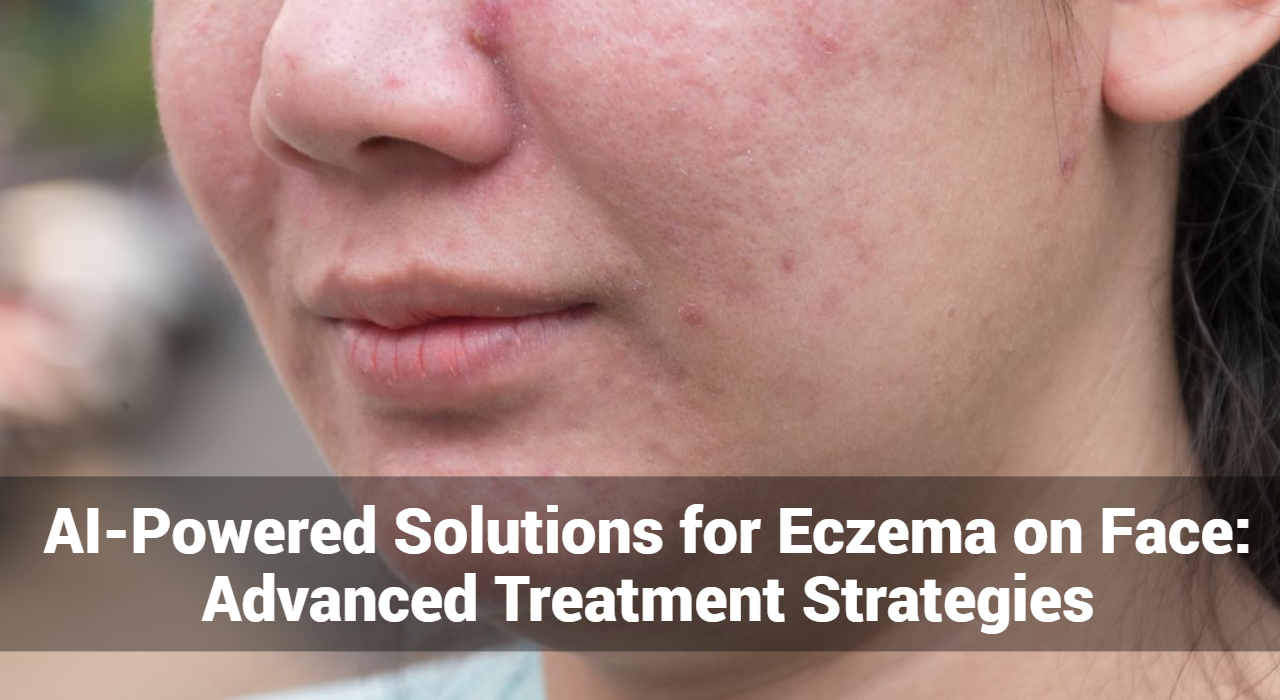Summer brings with it the promise of fun outdoor activities, but it can also bring a host of skin issues. From heat rashes to allergic reactions, understanding the various types of summer skin rashes is essential for prevention and prompt treatment. Let’s delve into some of the most common types, their causes, symptoms, and effective treatment options.
What’s That Summer Skin Rash?
Is an insightful guide aimed at helping readers identify and manage common skin rashes that tend to flare up during the summer months. From heat rash and sunburn to insect bites and allergic reactions, this comprehensive article delves into the various types of summer skin rashes, their causes, symptoms, and treatment options. By providing detailed information and practical tips, readers can better understand their skin conditions and take appropriate steps to alleviate discomfort and promote healing, ensuring a rash-free summer experience.
Types of Summer Skin Rashes Causes, Symptoms, and Treatment
As the temperatures rise and the sun beckons us outdoors, our skin can sometimes react in unexpected ways, leading to the development of various summer skin rashes. Understanding the causes, symptoms, and treatment options for these rashes is essential for enjoying the season to its fullest. Here’s a comprehensive guide to help you navigate through the most common summer skin rashes:
- Heat Rash (Miliaria):
- Cause: Blocked sweat ducts due to excessive sweating in hot and humid conditions.
- Symptoms: Small red bumps, itching, and discomfort, typically in areas prone to friction and sweating.
- Treatment: Keep the affected area cool and dry, avoid tight clothing, and use topical treatments like calamine lotion or hydrocortisone cream.
- Sunburn:
- Cause: Overexposure to ultraviolet (UV) radiation from the sun.
- Symptoms: Red, painful skin, sometimes accompanied by swelling and blistering.
- Treatment: Apply aloe vera gel or moisturizing lotion, take cool baths, and use over-the-counter pain relievers like ibuprofen.
- Insect Bites and Stings:
- Cause: Bites or stings from mosquitoes, bees, wasps, or other insects.
- Symptoms: Redness, itching, swelling, and sometimes pain at the site of the bite or sting.
- Treatment: Clean the area with soap and water, apply a cold compress, and use antihistamine creams or oral antihistamines to reduce itching and inflammation.
- Poison Ivy, Oak, and Sumac:
- Cause: Contact with the oily resin found in the leaves, stems, and roots of these plants.
- Symptoms: Redness, swelling, itching, and sometimes blisters in the affected areas.
- Treatment: Wash the area with soap and water immediately, apply cool compresses, and use over-the-counter corticosteroid creams.
- Prickly Heat (Miliaria Rubra):
- Cause: Blocked sweat ducts, leading to the retention of sweat under the skin.
- Symptoms: Small red bumps, itching, and a prickling or stinging sensation.
- Treatment: Keep the affected area cool and dry, wear lightweight and breathable clothing, and use calamine lotion or hydrocortisone cream.
- Allergic Reactions:
- Cause: Exposure to allergens such as pollen, certain plants, or specific foods.
- Symptoms: Redness, itching, swelling, hives, and sometimes difficulty breathing.
- Treatment: Identify and avoid the allergen, take antihistamines as directed by a healthcare professional, and seek medical attention for severe reactions.
- Swimmer’s Itch (Cercarial Dermatitis):
- Cause: Parasitic infection from exposure to contaminated water, often in lakes or ponds.
- Symptoms: Red, itchy bumps or blisters, typically appearing within hours of swimming.
- Treatment: Rinse off with clean water immediately after swimming, apply cool compresses, and use over-the-counter anti-itch creams.
- Sandfly Bites:
- Cause: Bites from sandflies, which are small flying insects found in sandy areas.
- Symptoms: Redness, itching, swelling, and sometimes pain at the site of the bite.
- Treatment: Clean the area with soap and water, apply a cold compress, and use antihistamine creams or oral antihistamines to reduce itching and inflammation.
- Heat-Related Rashes:
- Cause: Occlusion of sweat ducts and friction in hot and humid conditions.
- Symptoms: Red, itchy bumps, and blisters, often in areas where sweat accumulates.
- Treatment: Keep the affected area cool and dry, wear loose-fitting clothing, and use talcum powder or cornstarch to absorb excess moisture.
- Allergic Dermatitis (Contact Dermatitis):
- Cause: Contact with allergens or irritants such as certain fabrics, cosmetics, or household chemicals.
- Symptoms: Redness, itching, swelling, and sometimes blistering in the affected areas.
- Treatment: Identify and avoid the trigger, wash the area with soap and water, and use over-the-counter corticosteroid creams or oral antihistamines.
Remember, while many summer skin rashes can be managed at home with proper care and treatment, it’s essential to seek medical attention if you experience severe symptoms, persistent rash, or signs of infection. By staying informed and taking proactive steps to protect your skin, you can enjoy a rash-free summer and make the most of the sunny season ahead.
General Summer Skin Care: Tips to Keep Your Skin Healthy and Glowing
Summer brings fun outdoor activities, beach vacations, and plenty of sunshine, but it also poses unique challenges for your skin. With increased exposure to UV rays, heat, and humidity, your skin may become more prone to issues like sunburn, dehydration, and breakouts. Here are some essential tips to help you maintain healthy, radiant skin throughout the summer months:
- Stay Hydrated: Drink plenty of water to keep your skin hydrated from the inside out. Aim for at least eight glasses of water a day, and consume hydrating foods like watermelon, cucumber, and oranges.
- Use Sun Protection: Apply a broad-spectrum sunscreen with SPF 30 or higher every day, even on cloudy days. Reapply sunscreen every two hours, especially if you’re swimming or sweating. Wear protective clothing, hats, and sunglasses for additional sun protection.
- Moisturize Daily: Opt for lightweight, oil-free moisturizers that won’t clog pores. Moisturize your skin twice a day, preferably after showering or bathing, to lock in moisture and prevent dryness.
- Exfoliate Regularly: Gently exfoliate your skin two to three times a week to remove dead skin cells, unclog pores, and promote cell turnover. Use a gentle exfoliating scrub or a chemical exfoliant containing alpha hydroxy acids (AHAs) or beta hydroxy acids (BHAs).
- Cleanse Properly: Wash your face twice a day with a gentle, sulfate-free cleanser to remove dirt, oil, and impurities without stripping away natural oils. Avoid hot water, as it can dehydrate the skin, and pat your skin dry with a soft towel after cleansing.
- Protect Your Lips: Don’t forget to protect your lips from the sun’s harmful rays by applying a lip balm with SPF. Reapply lip balm frequently, especially if you’re spending time outdoors or engaging in water activities.
- Cool Down Your Skin: Take cool showers or baths to soothe overheated skin and prevent sweat-induced breakouts. You can also use a facial mist or chilled cucumber slices to refresh and cool your skin throughout the day.
- Watch Your Diet: Consume a balanced diet rich in fruits, vegetables, and omega-3 fatty acids to nourish your skin from within. Limit your intake of sugary, processed foods and alcohol, as they can contribute to inflammation and skin problems.
- Stay in the Shade: Seek shade during peak sun hours (10 a.m. to 4 p.m.) to reduce your exposure to harmful UV rays. If you must be outdoors, try to stay under umbrellas, trees, or awnings whenever possible.
- Monitor Your Skin: Keep an eye on any changes in your skin, such as new moles, rashes, or unusual spots. If you notice any concerning symptoms, consult a dermatologist promptly for evaluation and treatment.
Track and Manage your Eczema treatment using a comprehensive Eczema App
Download Eczemaless now
By following these summer skin care tips, you can protect your skin from sun damage, dehydration, and other seasonal challenges, ensuring a healthy and glowing complexion all summer long.
How can I help my child with Summer Skin Rashes?
Helping your child manage summer skin rashes requires a combination of preventive measures and appropriate treatment. Here are some tips to assist your child in dealing with summer skin rashes:
- Keep the Skin Clean and Dry: Encourage your child to bathe or shower regularly, especially after sweating or swimming. Use mild, fragrance-free cleansers and pat the skin dry gently with a soft towel to avoid irritation.
- Stay Hydrated: Ensure your child drinks plenty of water throughout the day to stay hydrated. Hydration can help prevent dry, itchy skin and promote healing if a rash occurs.
- Apply Sunscreen: Teach your child the importance of wearing sunscreen with a high SPF when spending time outdoors. Apply sunscreen generously to all exposed skin, including the face, arms, legs, and back, and reapply every two hours or after swimming or sweating.
- Protective Clothing: Dress your child in loose-fitting, lightweight clothing made from breathable fabrics like cotton to help prevent heat rashes and minimize irritation. Encourage wearing wide-brimmed hats and sunglasses for additional protection from the sun.
- Avoid Irritants: Identify and avoid potential triggers for skin rashes, such as harsh soaps, fragrances, and certain fabrics. Opt for gentle, hypoallergenic products and clothing to reduce the risk of irritation.
- Cool Compresses: Apply cool, damp compresses to the affected areas to soothe itching and inflammation. Avoid using ice packs directly on the skin, as they can cause frostbite.
- Moisturize: Use a gentle, fragrance-free moisturizer to keep your child’s skin hydrated and prevent dryness. Apply moisturizer liberally after bathing or showering to lock in moisture.
- Over-the-Counter Remedies: Consider using over-the-counter hydrocortisone cream or calamine lotion to relieve itching and inflammation associated with common summer rashes like heat rash or insect bites. Always follow the manufacturer’s instructions and consult a pediatrician if you have any concerns.
- Keep Cool: Help your child stay cool in hot weather by seeking shade, using fans or air conditioning, and avoiding strenuous activities during peak sun hours. Heat and humidity can exacerbate skin rashes, so staying cool can help prevent flare-ups.
- Seek Medical Advice: If your child’s skin rash persists, worsens, or is accompanied by other concerning symptoms such as fever, pain, or swelling, consult a pediatrician or dermatologist for a proper diagnosis and treatment plan.
By following these tips and taking proactive measures to protect your child’s skin during the summer months, you can help alleviate discomfort and minimize the risk of developing skin rashes.
Conclusion:
Summer skin rashes can range from mild discomfort to severe irritation, but understanding their causes and symptoms can help in prevention and timely treatment. By taking preventive measures such as staying hydrated, using sunscreen, and wearing protective clothing, you can minimize the risk of developing summer skin rashes and enjoy the season to the fullest. If you experience persistent or severe symptoms, consult a healthcare professional for proper diagnosis and treatment.
GET IN CONTROL OF YOUR ECZEMA
Use our AI tool to check the severity of Eczema and keep track of your Eczema progress.



